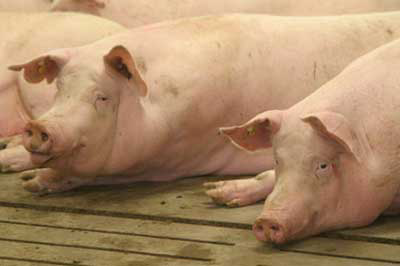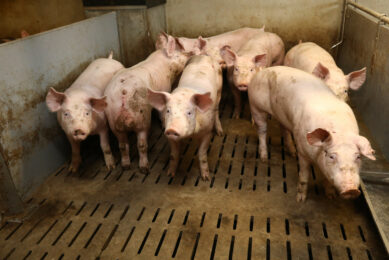Adisseo’s NSP enzyme gets first EU approval for sows

The European Union has granted Adisseo’s non-starch polysaccharide (NSP) enzyme authorisation for use in sows, from one week before farrowing to weaning.
The use of this enzyme* in lactating sows diets leads to a decreased loss of body weight, backfat and better feed intake during lactation. The estimated return on investment is between 20:1 to 40:1 (depending on swine prices).
A meta-analysis with this NSP enzyme was conducted, involving 6 trials and 640 sows. The trials were run at various universities around the world. This meta-analysis demonstrated an average reduction of 3 kg (more than 20 %) of body weight loss of sows receiving a standard diet including the enzyme across a wide range of environmental and housing conditions, diet formulations and breeds. Similar results were obtained in high NSP diets (wheat, barley) and low NSP diets (corn).
Body loss of sows during lactation is a key indicator used to anticipate the impact on subsequent sow prolificacy, longevity and length of weaning to oestrus interval.
A trial performed at the Prairie Swine Center (Canada) with lactating sows confirmed the interest of using an NSP enzyme in the lactating sow’s diet. There was a reduction in weight loss during lactation (-1.7 kg) and backfat loss after weaning (-0.5 mm). The positive effect was more important on first parity, which would be expected to have a positive impact on future reproductive performance of sows and productive longevity in the herd.
Furthermore, an increase of 240g of piglet weight at weaning (as obtained in Prairie Swine Center trial) can lead to an extra body weight at slaughter between 0.6 kg to 1.0 kg, eq 0.5 to 0.8 kg of carcass weight in field conditions. Keeping this in mind, the calculated benefit of using the enzyme would approximate be between 15 and 28 euros per sow per year (on the basis of French results (G3T/GTE 2013) 23 pigs produced sow/year, with a sine price from 1.3€ to 1.5€/ Kg). With a cost of use of only 0.75 euros/ sow/ year for the producer, this single advantage leads to an estimated return on investment between 20:1 to 40:1.
The enzyme was already approved for all poultry, piglets (weaned) and fattening pigs.
* Rovabio® Excel











